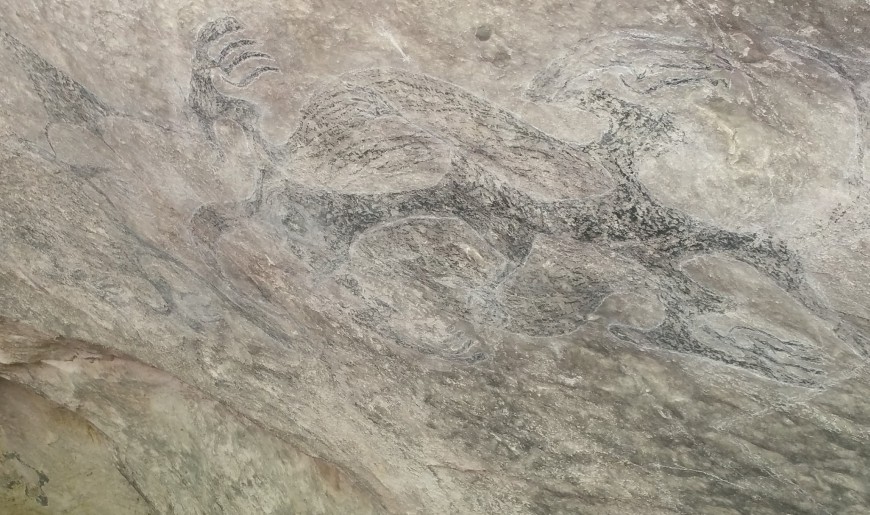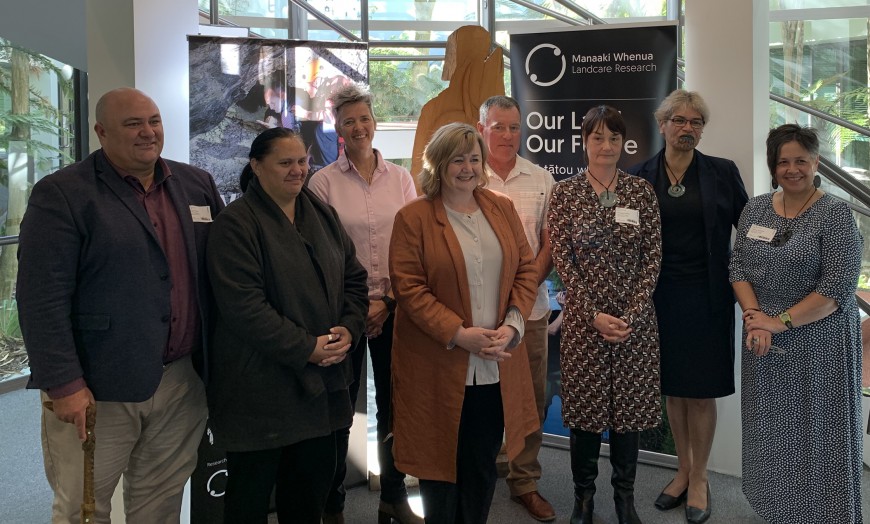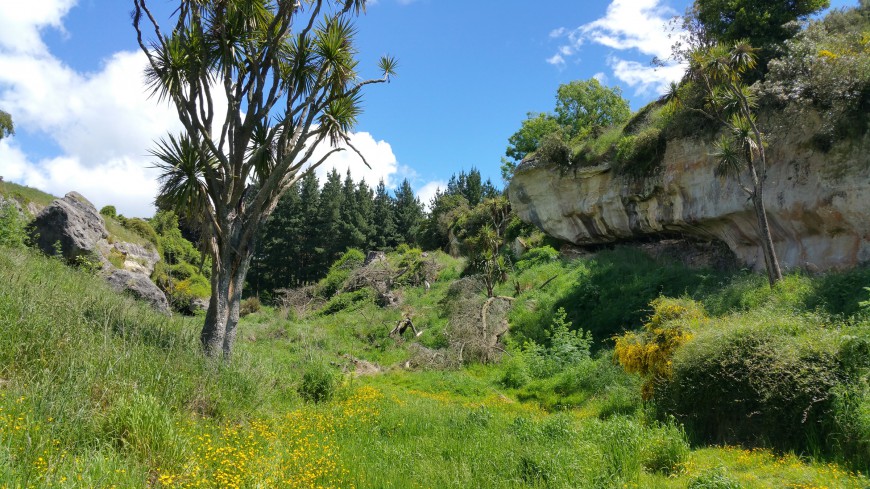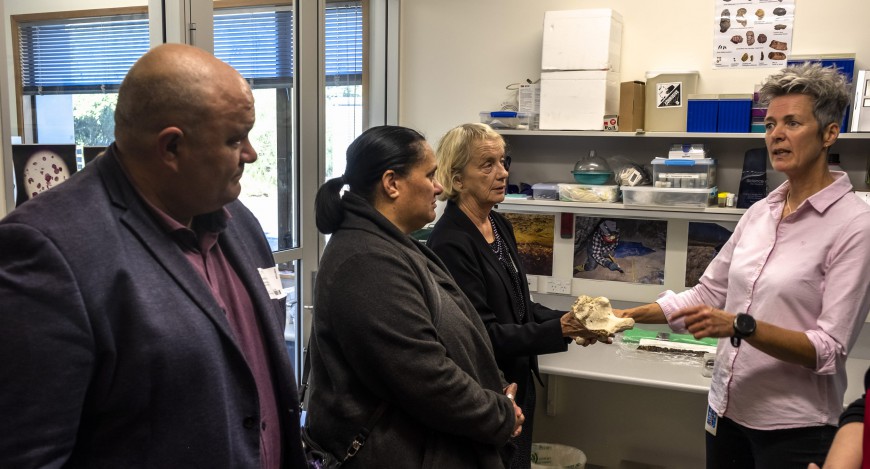
Māori rock art at Ōpihi, South Canterbury
A research proposal by Manaaki Whenua - Landcare Research (MWLR) and Ngāi Tahu Māori Rock Art Trust, which aims to enable Ngāi Tahu Te Rūnanga o Arowhenua to promote, manage and restore the ecological values surrounding Māori rock art sites at Ōpihi, South Canterbury, has been granted $250,000 through MBIE’s Vision Mātauranga Capability Fund.
The 14 sites are of the highest cultural value to Ngāi Tahu, and mana whenua, Te Rūnanga o Arowhenua. Throughout the two-year project researchers will conduct a ‘deep’ ecological study on the sites to help mana whenua develop a more detailed understanding of the interplay of the cultural and natural values of the sites, and the lifeways of the Ngāi Tahu tīpuna who inhabited them.
MWLR researchers Janet Wilmshurst and Jamie Wood will begin by taking sediment cores from nearby wetlands and analyse them for pollen, charcoal, and ancient plant DNA to reconstruct the vegetation history of the site. Then, guided by mana whenua, the team will also search limestone rock overhangs for preserved plant and animal remains, which will provide additional information about past ecosystems. MWLR botanist Peter Heenan will then synthesise the botanical knowledge of the limestone and wetland vegetation with past ecosystem reconstructions, to provide a baseline on which current biodiversity can be compared and restored.
Existing research and mātauranga relating to mahika kai in the wider area will be collated by Ngāi Tahu Māori Rock Art Trust and integrated with the results of the investigations undertaken by MWLR researchers.
The interwoven history of people and biodiversity at the site will help inform iwi restoration plans, enrich understanding, and contribute to the development of an educational programme and resources designed to support the protection and enhancement of cultural and ecological values at these and other rock art sites within the Ngāi Tahu rohe.

Hon Dr Megan Woods at our Lincoln site to announce funding for this significant funding.
Pictured: Matui Payne (Te Taumutu Rūnanga), Dione Payne (Lincoln University), Janet Wilmshurst (Manaaki Whenua), Hon Dr Megan Woods, Peter Heenan (Manaaki Whenua, Amanda Symon (Ngai Tahu Maori Rock Art Trust), Puamiria Parata-Goodall (Te Taumutu Rūnanga), Rachel Solomon (Ngai Tahu Maori Rock Art Trust)


